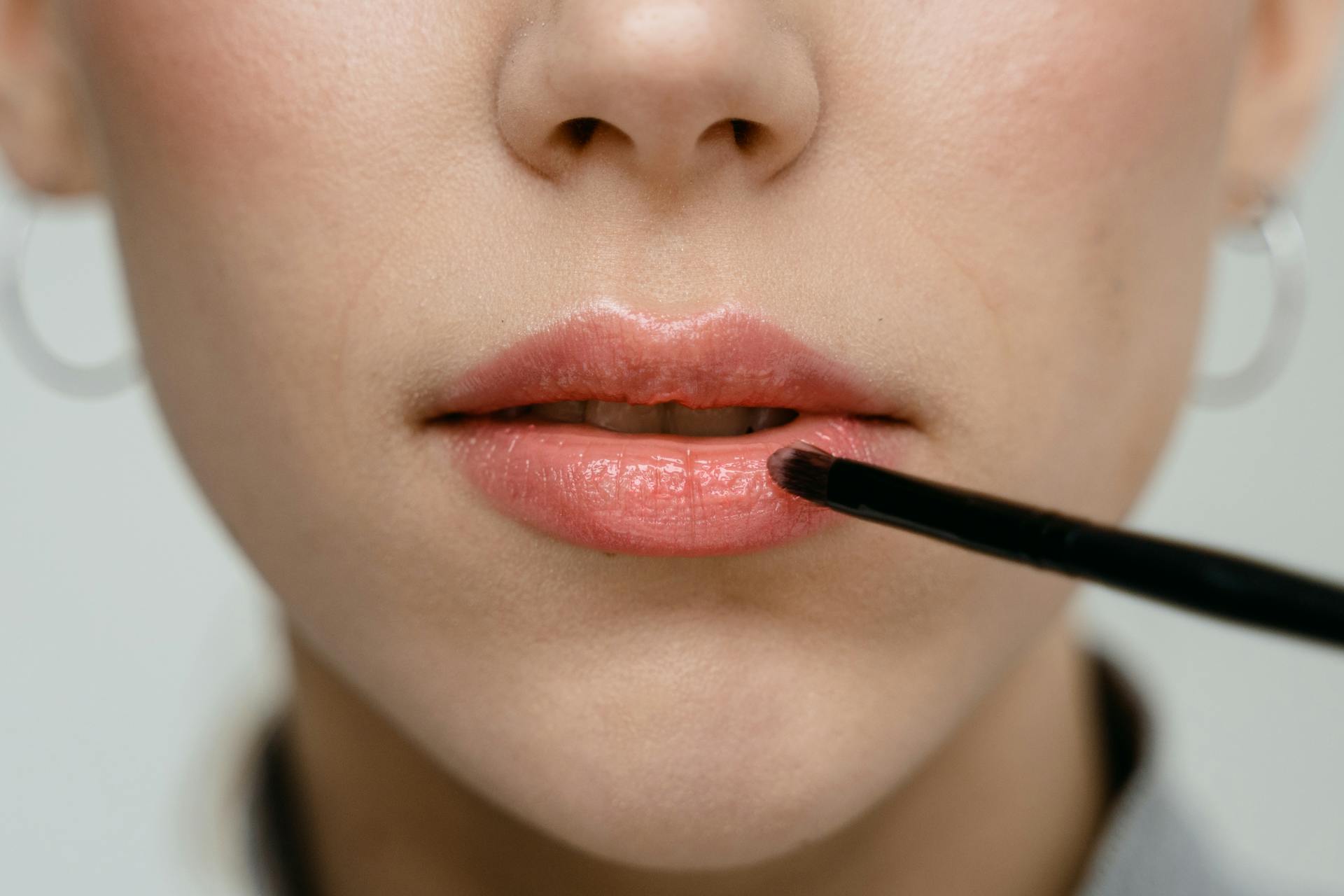
We thoroughly assess all products before recommending them. We may be compensated if you choose to buy through links on our site.
Question: What Are the Harmful Effects of Lip Gloss?
Answer: Potential harmful effects of lip gloss include allergic reactions to fragrances, skin irritation, and accidental ingestion of chemicals like parabens or heavy metals. Gloss without SPF can also magnify sun exposure, increasing the risk of sun damage to the lips.
The Less-Than-Glossy Side of Your Favorite Lip Product
You love the instant shine and plumpness a swipe of lip gloss provides. It sits in your purse, your car, and your desk drawer, ready for a quick touch-up. We all adore that high-wattage finish that makes lips look fuller and more luscious. But have you ever paused to consider what gives your favorite gloss its signature slip and sparkle? The conversation around clean beauty has encouraged us to examine our skincare and foundation. Now, it is time to look at the products we apply directly to our mouths. Exploring the potential harmful effects of lip gloss helps you make informed choices for your beauty routine and overall health. You can still achieve a beautiful, glossy pout while prioritizing your well-being. This knowledge empowers you to select products with better ingredients and safer formulations for daily use.

Best Lip Gloss
Lip Gloss
From gentle toning to intense color correction, these lip glosss offer targeted solutions for blonde and highlighted hair...
Decoding Your Gloss’s Ingredient Label
The back of your lip gloss tube contains a small list of ingredients that often reads like a chemistry textbook. While many ingredients are harmless, some common additives raise health concerns. You should pay close attention to these potential culprits. Many brands use parabens, such as methylparaben and propylparaben, as preservatives to prevent bacteria and mold growth. However, studies show these chemicals can mimic estrogen in the body, potentially disrupting normal hormone function. Another group of chemicals to watch for is phthalates. Companies often use them to make plastics more flexible and to help fragrances last longer. You might see them listed as DEP, DBP, or DEHP, though they are frequently hidden under the generic term “fragrance.” Phthalates are also linked to endocrine disruption and other health issues.
Heavy metals present another significant concern. Small, trace amounts of lead, cadmium, and chromium have been found in various lip products. These metals are not intentionally added but can appear as contaminants from colorants and raw materials. Because you apply lip gloss multiple times a day, you can ingest these metals over time. The cumulative exposure, even at low levels, can pose risks. Lead, for example, is a known neurotoxin with no safe level of exposure. Reading labels and researching brands that commit to third-party testing for heavy metals helps you avoid these hidden dangers. Choosing brands that are transparent about their formulations allows you to enjoy your shine with greater peace of mind about what you are putting on your lips and, consequently, in your body.
Related Article: How Often Should You Wear Lip Gloss?
How Your Gloss Can Trigger Skin Reactions
That tingling sensation from a plumping gloss might feel like it’s working, but it could be the start of an unpleasant skin reaction. The skin on your lips is incredibly thin and sensitive, making it susceptible to irritation from certain ingredients. The potential harmful effects of lip gloss often manifest as allergic reactions or contact dermatitis. This can look like redness, swelling, peeling, or persistent chapping that no amount of lip balm can fix. Artificial fragrances and synthetic flavorings are two of the most common triggers. While they make the gloss smell like vanilla or strawberries, these chemical concoctions can cause significant irritation for people with sensitive skin. The term “fragrance” or “parfum” on an ingredient list can hide dozens of unlisted chemicals, any of which could be the source of your discomfort.
Synthetic dyes, used to create those vibrant pinks and deep reds, can also be problematic. Dyes like Red 28 Lake or Yellow 5 Lake are derived from petroleum and can cause allergic reactions in some individuals. Likewise, some preservatives, beyond the previously mentioned parabens, can be sensitizing. If you find your lips are constantly dry or irritated despite frequent gloss application, your product might be the problem. The very ingredients meant to make your lips look good could be stripping them of their natural moisture barrier. Pay attention to how your lips feel after you apply a new product. A true nourishing formula should leave your lips feeling better, not worse. If you notice persistent issues, it is best to stop using the product and allow your lips to heal before trying a cleaner, fragrance-free alternative.
The Risk of Ingesting Chemicals
You reapply your lip gloss throughout the day without a second thought. You do it after drinking coffee, after eating lunch, and before heading into a meeting. Each time you lick your lips or take a bite of food, you ingest a small amount of the product. While a single application is negligible, this repeated exposure adds up significantly over years of use. Think about the cumulative total of all the gloss you have purchased and used. This constant, low-level ingestion is where many of the harmful effects of lip gloss become a serious concern. The chemicals we discussed, like phthalates, parabens, and trace amounts of heavy metals, do not just sit on your skin. They enter your digestive system and can accumulate in your body over time.
This long-term exposure can contribute to a range of health issues. Endocrine-disrupting chemicals interfere with your body’s hormonal system, which regulates everything from metabolism to reproduction. Heavy metals like lead are stored in the bones and can be released later in life, posing risks to organ function and neurological health. This is why choosing a “clean” lip product is so important. It is not just about avoiding skin irritation; it is about protecting your internal health from a constant stream of low-dose chemicals. You can reduce your risk by simply being more mindful. Try to wipe your gloss off before eating a meal. Reapplying a clean, non-toxic formula afterward is a much safer practice than consuming your cosmetics along with your food. Your body will thank you for making this small but impactful change.
Lasting Impacts on Your Lip Health and Appearance
Beyond internal health concerns and allergic reactions, some lip gloss formulas can negatively affect the health of your lips themselves. Certain ingredients can create a cycle of dryness. For instance, chemicals like phenol, menthol, and camphor are often included in plumping glosses to create a tingling, swelling effect. These ingredients work by irritating the lips. While this provides a temporary plumping illusion, they can severely dry out your lips with continued use. This leads you to apply more product to soothe the dryness, which only exacerbates the problem. The shiny, occlusive layer created by some glosses can also interfere with your lips’ natural ability to exfoliate and regenerate. It traps dead skin cells and can prevent moisture from the air from reaching your lips.
Another issue is the potential for clogged pores around the mouth. Heavy oils and waxes found in some formulas, like mineral oil or petrolatum, can migrate from your lips to the surrounding skin. This can lead to tiny bumps and breakouts, a condition known as perioral dermatitis. If you are prone to acne, a thick, sticky gloss could be contributing to congestion around your lip line. The sticky nature of gloss can also attract and trap environmental pollutants and bacteria against your skin and lips, increasing the risk of irritation and infection. To maintain healthy lips, look for glosses with non-comedogenic, nourishing ingredients like jojoba oil, shea butter, or vitamin E. These ingredients provide shine and hydration without compromising the health of your skin, ensuring your pout looks naturally beautiful.
Making a Switch to Safer, Cleaner Glosses
Understanding the potential harmful effects of lip gloss does not mean you must give up your favorite beauty product. It simply means you can become a more empowered consumer. The clean beauty movement has produced an amazing array of safe, effective, and beautiful lip glosses. You now have many wonderful options that deliver brilliant shine without the questionable ingredients. When you shop for a new gloss, take a moment to read the ingredient list. Your goal is to find products that are transparent about their formulations. Here is what to look for when making a healthier choice.
Seek Out Nourishing Oils
Look for glosses that use plant-based oils and butters as their base. Ingredients like coconut oil, jojoba oil, sunflower seed oil, cocoa butter, and shea butter hydrate and protect your lips. They provide a beautiful shine while actively improving your lip health.
Check for Certifications
Labels can be a helpful guide. Look for seals like USDA Organic, Ecocert, or Leaping Bunny (for cruelty-free). These certifications indicate that a third-party organization has verified the brand’s claims, giving you more confidence in the product’s quality and safety.
Avoid “Fragrance”
Opt for products that are fragrance-free or scented with natural essential oils instead of a synthetic “fragrance” or “parfum.” If you have sensitive skin, an unscented version is always the safest bet to avoid potential irritation.
Choose Mineral-Based Pigments
For color, glosses that use iron oxides and mica are generally safer than those with petroleum-derived synthetic dyes. Brands committed to clean beauty also ensure their mica is ethically sourced, which addresses environmental and social concerns.
By making these simple swaps, you can continue to rock a glossy lip with confidence. You protect your health, support ethical brands, and nourish your lips all at once. The market for clean cosmetics is growing every day, so you will not have to sacrifice performance for safety.
Conclusion
Your beauty routine should make you feel good inside and out. While lip gloss is a fun and easy way to enhance your look, being aware of what is inside that tube is crucial. By understanding the potential risks associated with certain chemicals and making conscious choices to avoid them, you take control of your health. You can enjoy the brilliant shine and plump pout you love by opting for cleaner, safer formulas that prioritize nourishing ingredients. The next time you shop for a new gloss, you will have the knowledge to choose a product that not only looks beautiful but also supports your long-term well-being.


